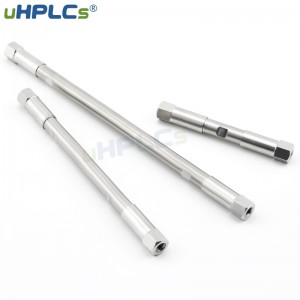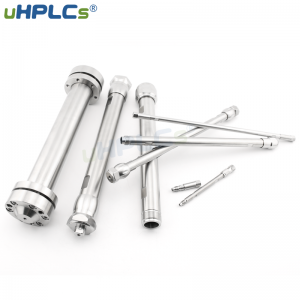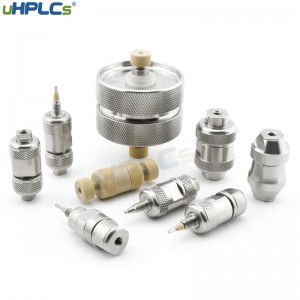Any HPLC or UHPLC column has a trial life. Proper use and maintenance of the column will extend its life and contribute to the economics of the method. It is essential to follow accepted chromatographic practices such as proper sample preparation (samples should be filtered through 0.45µm membrane filters for HPLC and 0.22µm filters for UHPLC); good quality/purity of the mobile phase (e.g., isocratic solvent for isocratic mode, gradient grade solvent for gradient elution); filtered mobile phase, well-developed method with sufficient elution capacity to minimize non-specific adsorption; temperature, pH and maximum back pressure range compatible with the selected column. It is also worth mentioning that the total number of injections is inversely proportional to the injection volume; for example, if 10 µL of sample is injected at a time, which results in a column lifetime of 5000 injections, an increased sample load of 100 µL per injection typically reduces the column lifetime to approximately 500 injections.

Even after carefully following all the points listed above, users sometimes feel that the column life should be longer. So to find out how to extend the life of a lc column, it is first necessary to understand what causes column aging.
I. Particle contamination/clogging of the column.
Any particulate material from the mobile phase or sample can contaminate the column. Some particles may also migrate into the column packing, increasing column back pressure; this will create more stress on the pump and may cause the column to settle and form cavities, leading to peak splitting.
II. Non-specific adsorption.
HPLC columns may encounter many materials during use, such as salts in the buffer or impurities in the mobile phase and sample. The retention of these materials may be lower or higher than the separated analytes. If the detector observes these undesired interferences, ghost peaks, speckles, baseline interferences, or even negative peaks may appear. Absorbed impurities may negatively affect the retention mechanism (shorten retention time) or begin to act as a new stationary phase (increase retention time). What is the most reliable and definitive solution offered for this topic? Use a liquid phase protection column! Protected columns will filter all particles, accumulate non-specific adsorbent materials, and will also extend the life of the analytical host column used at a slightly alkaline pH.
III. Increased Pressure
Each particle-filled column contains a range of particle sizes. The particle size distribution may be broader or narrower. The hplc column is subjected to pressure stresses during chromatography when a non-pressurized injection circuit is connected to a pressurized column. During these pressure stresses, the column packing is shocked, and the particles may then swap positions, causing the typically larger particles to rise (toward the column inlet). The smaller particles fall (toward the column outlet). After multiple injections, the smaller particles will accumulate at the bottom, and the larger particles will accumulate at the top. The smaller particle area has a higher back pressure of stacking density, and the user will observe a steady increase in back pressure; this again creates more pressure for the instrument and can cause the column to settle and form voids, leading to peak splitting.
Many customers require some procedure to regenerate the hplc column to its initial performance. Therefore, the importance of carefully reading the instructions accompanying each column cannot be overemphasized. The table also contains information on recommended column maintenance and regeneration procedures.

However, we can analyze the efficiency of hplc column regeneration theoretically. Contrasting the column by particles can usually only be easily removed by cleaning the hplc column in backflush mode for about 5 to 20 column volumes if the manufacturer allows. It is essential to ensure that both column fusions (inlet and outlet) have the same porosity. Keep in mind that small impurity particles trapped deep in the lc column packing are unlikely to be removed. As a result of this cleaning, the column back pressure should be reduced. Removing non-specific binding substances from the column is often more complex, and the results are usually unpredictable because we usually do not know what compounds these contaminants contain. Success rates may range from 0% to 100%. For columns with particles smaller than 5µm, complete restoration of column fill uniformity is highly unlikely. Usually, column backflush is only effective for a short period.
Post time: Aug-13-2022







